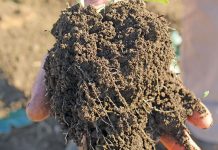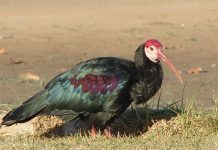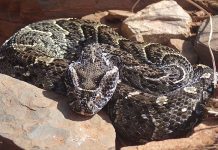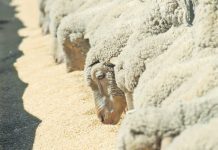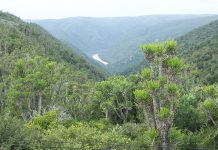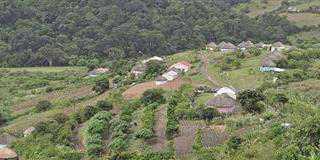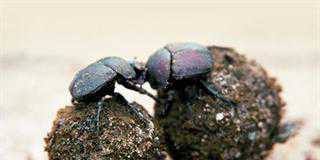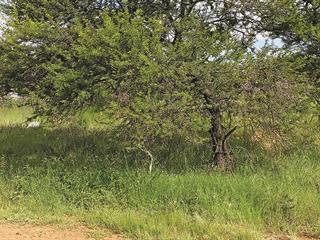
Provision of appropriate and inexpensive supplementary feed is important for enhancing the productivity of goats in communal areas, where inadequate feed is often a problem. Typical forages such as hay, straw and stover are low in nitrogen, the critical nutrient for goats in the dry season.
The crude protein (CP) content of these forages ranges from 20g CP/kg DM to 50g CP/kg DM, and does not meet the minimal requirement of 80g CP/kg DM needed for optimal rumen microbial function. In recent years, researchers have focused their attention on Acacia karroo (sweet thorn) as a cheap supplemental protein that contributes to improved animal performance in terms of intake and digestibility.
Advantages
A. karroo leaf meal contains a CP concentration of between 100g/kg DM and 250g/kg DM, as well as essential amino acids and minerals. It contains a higher proportion of desirable fatty acids, such as α-linolenic acid.
The CP values are within the optimal range of 180g/ kg DM to 230g/kg DM needed for body weight gain, maintenance and production requirements in growing goats. This makes A. karroo a valuable CP supplement for goats on low-quality forage.
The plant also has a low level of acid detergent fibre, an indication of high voluntary DM intake. A goat of 12kg to 30kg should be fed 150g to 300g of A. karroo leaf meal per day.
Challenges
The presence of tannin, as well as the potential for the plant’s thorns to restrict goats from reaching its leaves, pose difficulties.
- Tannins
A. karroo contains condensed tannins (CTs) ranging from 57,1g/ kg DM to 110g/ kg DM. Consumption of CTs can be either beneficial or detrimental, depending on how much is ingested, among other factors. Several detanninification methods have been proposed by researchers, and there is a need to develop simple, cost-effective techniques that can be adopted by smallholder farmers. Such approaches include wetting the feed with a cheap source of alkali (wood ash and charcoal), and chopping and drying the leaves.
- Thorns
A. karroo is difficult to handle because of its thorns, but the branches can be harvested using a pair of long clippers or a handsaw. The branches can then be stacked up to 1,5m high on thick tarpaulin or polythene bags, under thatched shade.
The leaves are left to air-dry for three or four days.
Sun-drying should be avoided as the sun’s ultra-violet radiation reacts with the forage constituents of the leaves, increasing fibre content and reducing digestibility.After drying, the leaves are collected by shaking them gently with a long stick. They are then separated from the thorns, leaving the twigs behind.
Sweet thorn leaf meal can be mixed with locally available energy feed sources, such as rangeland grass hay or chopped residues, before feeding. It may be put into feed troughs in pens, and fed to animals each morning before grazing.
The most widespread Acacia species
Acacia karroo is the most widespread Acacia species in Southern Africa, with a mean density of between
400 plants/ha and 800 plants/ha. It ranges in height from shrub to tree, or between 1m and 15m tall, and can grow up to 25m.
Leaves are typically smooth and glossy. Its most distinctive feature is its straight, strong white thorns, which are around 10cm long. It occurs in various habitats, from sea level to altitudes of 1 800m, and grows in many soil types, from sand to heavy clays. It is drought-resistant due to its extensive root system.
A pioneer species with a climax of 40 years, it occupies a successional position between tropical forest and bushveld. It grows in riverine communities and arid environments, where it can flourish provided there is a steady supply of groundwater.
Large specimens indicate underground water. Acacia karroo is included in the National Weed List and regarded as an invader of natural rangeland, competing for space, light, water and nutrients. Several methods have been devised to eradicate encroaching, with little or no success. If seen as a source of protein supplement for goats, this can assist in controlling encroachment.
Results on goat production
Goats supplemented with A. karroo leaf have higher growth rates and lowered meat pH than non-supplemented groups.
Reports confirm that A. karroo supplementation significantly affects meat tenderness and juiciness, and higher average daily gains have been recorded.
The use of anthelmintic medicine to control parasitic nematodes of the gastrointestinal tract poses serious threats to meat consumers, due to its residual effect. Most smallholders cannot afford to buy such medicines, but recent studies indicate that
tannin-rich plants such as A. karroo might present a promising option to reduce nematode infections in small ruminants.
Research has shown a reduction in faecal larval and Haemonchus contortus worm counts in goats that consumed A. karroo leaves. About 50g/kg DM intake of a CT-rich diet reduced faecal egg counts, worm fecundity and worm numbers in goats infected with either Teladorsagia circumcincta or T. colubriformis.
Acacia karroo represents an inexpensive, risk-free and eco-friendly approach to controlling worm infection in indigenous goats in communal areas.
Conclusion
A. karroo represents a multi-purpose tree for indigenous goats in communal areas, particularly in drought, and is an asset on any farm. One of the tasks of agricultural extension officers is to bridge the information gap between communal farmers and research institutions.
In the case of A. karroo, these officers should show smallholder farmers how to overcome the challenges discussed, and incorporate A. karroo into the feeding programmes of their goats to increase their overall performance.
David Brown is a research assistant at the School of Agricultural and Environmental Sciences at the University of Limpopo, and a tutor at the College of Agriculture at the University of SA, Polokwane Campus. Email him at [email protected].

